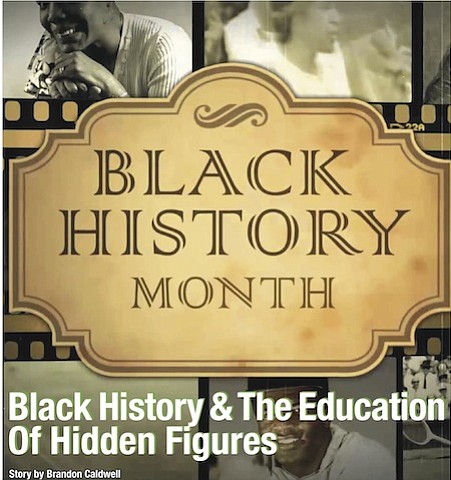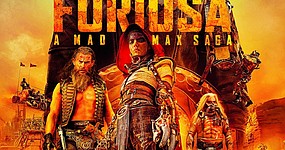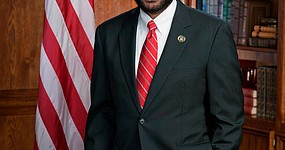Black History & The Education Of Hidden Figures
Brandon Caldwell | 2/3/2017, 8:15 a.m.
At schools across the country, the vibrancy of February is all the same. There are the morning announcements, with school wide events announced; birthdays lauded, teachers and school teams having imaginary flowers thrown on their name. Then comes the obligatory read out of a Black History Month figure. Some students roll their eyes of boredom, others, too disinterested to care. Yet there is one student, his or her ears perked up, waiting to feed into someone new. They’re anticipating a new fact, a new lesson, a new hero to look upon.
The crackle of the intercom momentarily grasps attention. “And for today’s Black History fact, we have Garrett A. Morgan. Garrett A. Morgan was the inventor of the traffic signal and the gas mask which helped our soldiers in World War I.”
Without hesitation, the child groans. "We learned about Garrett A. Morgan last year,” they say in a huff. The sentiment carries over to school issued Black History programs and curriculum. There, students are pacified with stories about Martin Luther King Jr, Rosa Parks, Frederick Douglass & Jackie Robinson. There’s a dash of Harriet Tubman, Sojourner Truth, Louis Armstrong & Madam C.J. Walker. But the names get repeated throughout history, as if they are the lone figures of Black History children need learn and endure within them.
As Texas battles with activists who want more out of the books and course curriculum their children are handed, the stories of “hidden figures” within Black History are beginning to seep out and take form. No longer in the shadows of buried paragraphs and one-liners, these individuals are gaining their recognition. Whitney Houston & Bobby Brown, two members of entertainment history that carry their own panache and regality once told MTV, “We need a longer month” and “Black History should be all year" respectively. Maybe the “Something In Common” couple had it right.
The history of minorities in America does not carry the meat and potatoes of textbooks, whether it be in elementary classes or AP high school courses. For African-Americans, there’s discussions of the slave trade, the 13th Amendment and then small mentions up until the 1950s. For civil rights, there are a few chapters but they only cover bullet points, beginning with the Brown v. Board of Education ruling in 1954 that should have ended Jim Crow and desegregated the schools, but didn’t. There’s Parks, refusing to give up her seat and getting arrested for it. There’s the sit-ins, the “I Have A Dream” speech, the passage of the Voting and Civil Rights Acts and it concludes with the assassination of King in 1968. That’s only in regards to African-American history. In Mexican-American history, textbooks focus squarely on war, with little innovation or celebration in between. The various Indian tribes that ruled Mexico before being conquered by the conquistadors? A mere elongated footnote on the road to American colonization by the Europeans. There’s a transition into Mexican history but that gets diluted as a prop for Texas independence and the eventual Mexican American war of the 1840s. It won’t be another 120 years until the Mexican-American fight for civil rights via Cesar Chavez is mentioned, if your textbook would dare cover it.
I conducted a recent social media poll, asking what did schools decide to cover in regards to Black History education outside of every February. If you were in public school, the general consensus was “the bare minimum”. For some students born in Oklahoma, the history and legacy of Black Wall Street wasn’t covered until they were in their 20s. Some gained an appreciation for their history via their parents. Some even admitted that their course work growing up dealt with only King’s “I Have A Dream” speech, a biography on one famous black person and then nothing for years after. Educators over time have been grilled to give students a bare bones brief into the world of their history, their culture. If not for the famous figures, the walk towards learning more stories that fill in the blanks? A task to be undertaken by ones lonesome.
The history of minorities is an elective in some parts. Other teachers, such as my AP History teacher went above and beyond to educate us on the differences between W.E.B. DuBois & Booker T. Washington. As the school board breathes a sigh of relief over current studies being deemed benign and safe, it came under fire last yea. A textbook titled “Mexican American Heritage” was the lone book the board received when it called for new textbooks for high school social studies classes, including Mexican-American heritage. The book however is rife with errors and was ultimately voted down 14-0 by the state board of education. An Ad Hoc Committee determined more than 140 incorrect incidents in the book from gross inaccuracies to racial generalizations. Even in some cases, those who decide to tell the story can bury the hidden figures of your history without one even realizing it.
Rep. John Lewis of Georgia is a hidden figure. Over the past two years however, he’s found his prominence after being spotlighted in Ava DuVernay’s “Selma” and entering a very publicized feud with President Donald Trump. Trump’s decree that Lewis was “all talk, no action” forced many to research Lewis’ name, his constant presence in the Civil Rights Movement and his refusal to back down despite being jailed, assaulted and more in the name of civil rights.
Diane Nash is a hidden figure. Reduced to a minor role in “Selma”, Nash’s legacy within the Civil Rights Movement is quite large. As students and older figures clashed on the direction of the movement (an irony given today’s fight with Black Lives Matter being as generational), Nash strategy for students in regards to lunch counter sit-ins, the Freedom Riders as well as co-founding the Student Nonviolent Coordinating Committee make her a hero. Then President John F. Kennedy appointed Nash to a committee in regards to civil rights legislation, leading to the Civil Rights Act of 1964. As often as the Movement derided the work of women and homosexual men, Nash remains a champion of civil rights.
The same goes for Bayard Rustin who was the chief organizer of the 1963 March on Washington for Jobs and Freedom. Detailed oriented and brilliant, Rustin made it clear that everything had to coalesce in order for the movement to work. According to a 2011 Washington Post article, the reason why Rustin’s name isn’t more prominently featured amongst civil rights leaders and champions is due to his position and sexuality. The movement, heavily mandated to have figures both seen as morally upstanding and believers of the faith couldn’t have Rustin in the foreground. So his organizational work, from the movement to the Social Democrats was viewed as monumental behind the scenes, never up close and personal. His partner, Walter Naegle said of him, “Bayard had a lot of baggage — communist youth member, conscientious objector. But being gay was the one thing that was still unforgivable to a lot of civil rights leaders.”
Although Rosa Parks gets most of the accolades for her refusal to give up her bus seat in 1955, a black teenager was jailed for the crime some nine months earlier. Claudette Colvin at the age of 16 was arrested on March 2, 1955 after standing in solidarity with a pregnant woman who also refused to move. In regards to her position within the movement, Colvin remarked, “My mother told me to be quiet about what I did. She told me to let Rosa be the one: white people aren't going to bother Rosa, they like her.” Colvin’s actions eventually led to Browder v. Gayle, a case that eventually went to the Supreme Court and determined that bus segregation was unconstitutional in 1956. Colvin was the last to testify in the case.
When the movement shifted to enterprise, black names continued to make way. There was Whitney Young, a Kentucky born man who spent most of his time within the National Urban League to fight employment discrimination in the United States. In Robert Warren Penn’s “Who Speaks For The Negro?” Young said, “We are the social engineers, we are the strategists, we are the planners, we are the people who work at the level of policy-making, policy implementation, the highest echelons of the corporate community, the highest echelons of the governmental community – both at the federal, state and local level – the highest echelons of the labor movement.” His development of a domestic version of the “Marshall Plan” which called for a $145 billion in federal aid to cities led to then President Lyndon B. Johnson partially implementing them in his War on Poverty. During his time at the Urban League, Young expanded the organization, focused on alternative education for high school dropouts and rounded up black leaders to solve community issues.
As time progresses given the current administration in Washington, the rights of journalists will be tested more and more. No one may know this more than Earl Caldwell (no relation), a journalist who worked mostly with the Black Panthers in the 1970s. At the time, J. Edgar Hoover’s paranoia about the Panthers led him to wanting more informants against the group. The so-called “most dangerous threat to America” had wanted Caldwell’s knowledge of the group in order to bring it down. When it came time to appear in front of a federal grand jury, Caldwell refused. The man who was the lone reporter of the scene for the assassination of Martin Luther King Jr., had refused to give up confidential information on the Party. The government attempted to argue that it was a violation of the First Amendment but the Supreme Court ruled that it was not. It led to the common phrase amongst journalists, “I’ll never reveal my source.” Caldwell’s work continued in the 1990s where he reported on police brutality suffered by six Haitian cab drivers. The drivers were raped and sodomized by the officer’s service revolver, uniform and police van. Caldwell’s reporting was largely ignored by city officials and he was ultimately fired from his post at the New York Daily News in 1994. Three years later, the city dealt with the 1997 assault on Haitian immigrant Abner Louima, a victim of a near similar crime as the one Caldwell reported on.
Without Carter G. Woodson, the idea of Black History Month wouldn’t even be a thing. The concept was only regarded as Black History Week when Woodson founded it in 1926. It wouldn’t be until 1976, when America celebrated its bicentennial was it formally recognized by President Gerald R. Ford as a national recognition of African-American achievement. It wouldn’t be recognized in the United Kingdom until 1987 and Canada in 1995. Which is probably why Canada is also recognizing civil rights activist Viola Desmond.
The mother of the modern Civil Rights Movement up north, she refused to leave her seat in a segregated theatre in Nova Scotia and was jailed on tax evasion charges for failure to pay the one cent difference between the segregated seat in the balcony and the main ballroom seat which she sat in. After her trial, she later moved to Montreal and later New York City. Her fight helped establish the Nova Scotia Association for the Advancement of Coloured People (NSAACP). In 2018, she’ll become the first Canadian woman on printed money when she becomes the face of the $10 bill.
The more combing for hidden figures we have, the greatest identity many will grow to wear and cherish. DuBois had his “talented tenth” idea of bourgeoise elitism but he didn’t deny the importance of knowledge. Marcus Garvey was ridiculed as a loon by the government until further teachings show how forward thinking he was. Our history books, the ones written not by us but by those who believe it is best to think for us exclude as much as they possibly can. The most ignorant lie ever created was that if you wanted to hide something from someone black, you’d hide it in a book. Not anymore.
Black History Month is in its 41st year of being recognized in the United States, to a people with more than centuries of culture, racial identity and more tied to it. It also goes well beyond the books and lessons taught in schools across the country.








